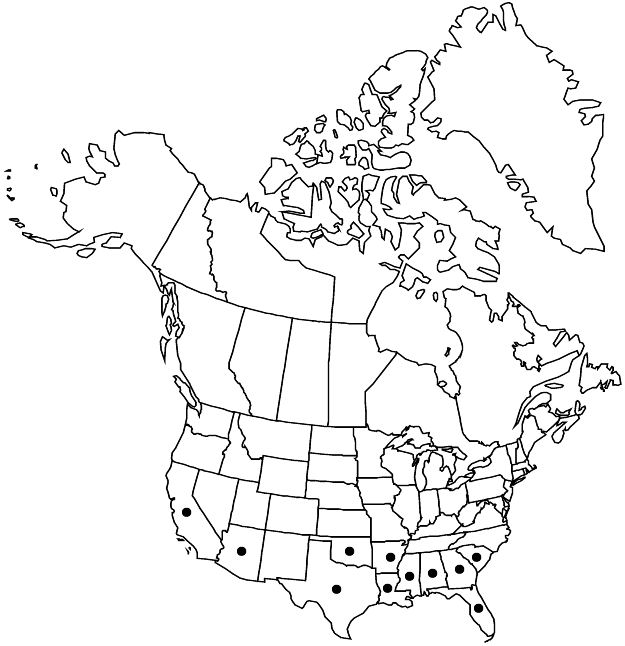Pyracantha koidzumii
J. Arnold Arbor. 1: 261. 1920.
Plants 5–40 dm. Stems: thorns sparse to abundant; young twigs reddish brown-hairy, glabrescent. Leaves: stipules 3–8 mm; petiole 1–3 mm; blade oblanceolate or narrowly obovate, 2.5–4.5 × 0.5–1.2 cm, base cuneate, margins entire, rarely with minute teeth near apices, apex truncate or retuse, rarely rounded, abaxial surface brown-hairy, becoming glabrate and pale green, not glaucescent, adaxial glabrous. Inflorescences 3–4 cm diam. Pedicels 5–12 mm, sparsely brown-hairy. Flowers 8–10 mm diam.; hypanthium densely hairy; calyx brown or yellowish brown-puberulent when young, glabrescent, sepals triangular, 1–1.3 mm, apex acute; petals suborbiculate, 3–4 mm, apex slightly emarginate. Pomes orange-red, 4–7 mm diam.; pedicels 5–13 mm.
Phenology: Flowering Feb–May; fruiting Jul–Feb.
Habitat: Disturbed forests, beach bluffs, riparian areas, thickets, roadsides
Elevation: 0–1500 m
Distribution

Introduced; Ala., Ariz., Ark., Calif., Fla., Ga., La., Miss., Okla., S.C., Tex., e Asia (Taiwan), also in Pacific Islands (Hawaii), Australia
Discussion
Occasional specimens of Pyracantha fortuneana with sparsely toothed leaf margins can be difficult to distinguish from P. koidzumii, and some plants in California may be of hybrid origin or represent escapes of horticultural selections.
Selected References
None.